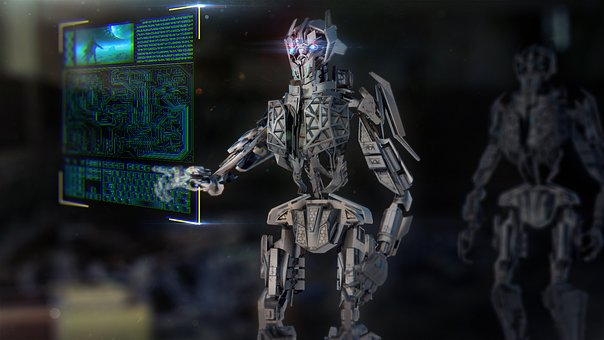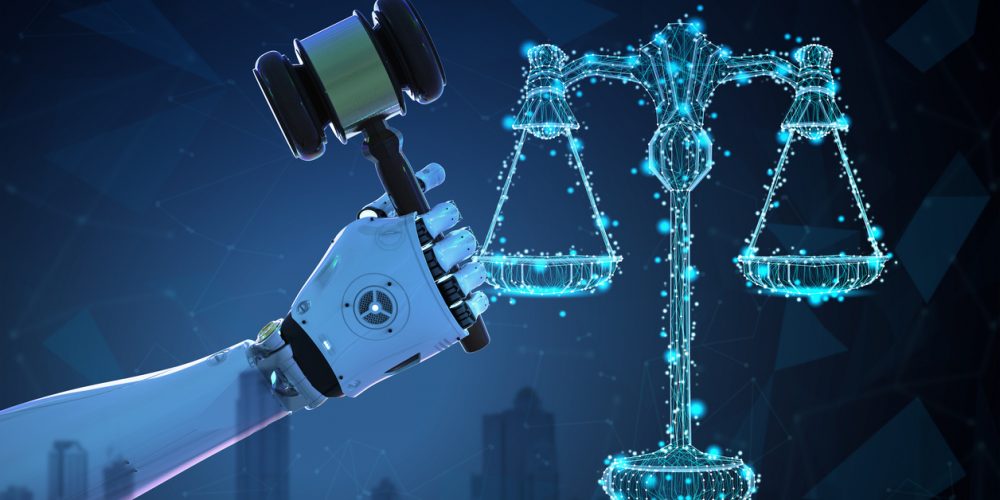
A lie reveals a brief history: look at the lie detection technology in the AI era
There are many kinds of situations in which people lie, and some are unconscious. For example, “Is it eaten?” “Eat.” The lie between lovers can instantly break the small moments of the vows, and the commercial lies will let the white flowers flow. Once the days are gone, the politician’s lies ruin a country between the collisions…
The British are very boring to count, people have to lie at least 80,000 sentences in their lifetime.
Of course, when someone lie, someone is busy exposing it. If every lie person grows out of Pinocchio’s long nose, there may be no lies in the world. But this is a fairy tale after all. Throughout the history of mankind, the struggle between people and lies has been followed, mainly because lies have caused too much harm to others and society in more circumstances, so they have to find ways to expose them.
Then, what traces of this picture of the struggle against lies are worthy of our view?
Today, let’s just stir up the cold rice and stew hot soup, and talk about the twists and turns of human beings on the road of polygraph.
First, did not lie? You said no, you have to listen to God.
The worship of theology is permeated in the hearts of people who are full of ignorance and fear of nature. Then, who is lying, naturally it is up to the gods to judge.
How is the god judged? He couldn’t jump out and point to someone saying “this is a liar”, and that is too faceless. The gods always use a certain object or phenomenon as a carrier.
For example, ancient India, Cuban and ancient Germans will adopt a method called “water trial” to test whether a person lie, specifically to throw people into the river, whoever sins without sin, who sinks – That is the god does not let him come up, he is a liar.
In medieval Europe, a duel was used to prove that right and wrong is a broader form. Because people think that this duel is controlled by God, how can God let the righteous party lose? Therefore, whoever wins, whoever is telling the truth; whoever loses, will be sanctioned. Even if the parties disagree with the judge’s decision, they can also challenge the judge. If the judge is beaten down, then it is a reversal…
This is a typical miracle.
Of course, there is even more ridiculous: Cambodia will throw two people into the house to sever water food, whoever swears who lies; the hand reaches into the boiling water, if the hand is burnt, it means lying.
Undoubtedly, these ways of demonstrating evidence are limited to a primitive and morbid form of scientific means that lacks lie detection. People today may be confused: Why is such a ridiculous way accepted? In fact, it is also very understandable. In the ancient times of theology, in the face of unexplained problems, people often subconsciously find a consensus. Among all things, only God is the only one. Therefore, no matter how ridiculous the way, from law enforcement to the law-breakers, they all maintain a high degree of psychological identity in this way. The referee does not think that he is doing evil, and that the fugitive does not feel that he is being abused.
Is it ignorant? Maybe, maybe not. However, from today’s point of view, the resulting defamation cases are certainly not in the minority, and behind this is a cruel history full of blood.
Second, the fog to open: gradually reliable lie detection doorway
Under the prevalence of divine evidence, some people have begun to explore more reliable methods of detecting lies. Although the method is relatively primitive, it also fully reflects the “smartness” of the ancients under limited wisdom and conditions.
In the 17th century, Indians invented a “chewing rice method” to lie, which took advantage of simple physiological knowledge. Because the innocent people have no emotional stress, the saliva is normally secreted, and there are many rice that can be spit out. The liar is nervous because of fear of fear, which leads to insufficient secretion of oral saliva. The tongue is dry, and the rice that is spit out is naturally less. This method is basically using the physiological abnormalities caused by human psychological changes.
The use of more methods is the judgment of people’s psychology. The more famous ones are the British tails, the Indian monkey tails and the Chinese touch clocks. When sinful people touch, the baboons, monkeys and bells will scream or ring, and those who are not guilty will not have these situations. Of course, these will inform the tester in advance of the test. Then, in this way, the guilty person will be affected, and he will not be allowed to contact. I dare not touch it, just in the trap, because these things have been painted. With your hands stretched out, you know who the liar is.
China has actually made a relatively scientific summary of the physiological and psychological characteristics of the liar long before. “Zhou Li” clearly stipulates how to judge the real situation in the face of litigation: “When you listen to the lawsuit in five voices, ask for the people’s feelings: a resignation, two sorrows, three sighs, four ears “Five eyes listen.” That is, through the observation of five aspects of language expression, facial expression, respiratory frequency, ear root changes and gaze performance, to judge the situation of the presenter’s heart, and thus judge whether the words are true or not.
Combining physiological changes with psychological activities for summarization and application not only has positive promotion significance for the fair handling of early litigation cases, but also contributes a lot to the theoretical basis of modern polygraph technology.
From the manifestation of evidence to the exploration of the physical and psychological reactions of people lying, this is a huge improvement. This shows that human beings have gradually become more aware of themselves and have begun to control and handle affairs. Lie detectors are no longer patents of the gods, but humans can control them.
However, it is obvious that although people use physical and psychological knowledge to conduct lie tests, they have two major problems: the uncertainty of the judgment subject and the omission of the judgment basis.
What is uncertainty? In other words, judges who judge one thing will change frequently. For example, for the “five listening”, although it provides a direction for theoretical guidance, each judge will have a difference in accuracy in terms of intelligence, knowledge, etc. during specific implementation. For example, to what extent is it guilty to talk? Or must blush be because of lying? It may also be hot weather.
So, what is the omission of judgment? If the prisoner has a slightly higher psychological quality than the ordinary person, the face is not red and the heart is not jumping, and the speech is smooth and natural, then this trick does not work. One can see that the performance is very obvious, but the subtlety of the fall is beyond its ability.
Then, people can’t, what?
Third, technology growth: strong drive to improve the accuracy of lie detection
The emergence of polygraphs marks the beginning of the lie detection as a problem that can be solved with technology.
Even modern lie detection techniques follow a basic logic from capturing physiological characteristics to psychological judgment. From the end of the 19th century to the present, the lie detectors invented by humans are represented by the following physiological basis:
(1) Pulse basis
This method was first applied by the Italian criminologist Langbruso. It is filled with water in a special container, and then the subject’s arm wrapped around a tube that is sealed at the top is immersed in water while clenching the fist. Then, the beating amplitude of the heart is recorded in the form of the rise and fall of the glass tube water level, thereby judging the psychological emotion of the test subject when receiving the question. Langbroso used this method to crack many cases, which also made pulse lie detection a turning point in lie detection technology innovation.
Also supporting the pulse test is American Marston, who developed a pulse pressure gauge and developed a blood pressure test device for systole. Although several cases have been cracked, this person is more inclined to commercialize polygraph technology, such as marriage counseling, such as testing the psychological reaction of the wife and husband kissing different strangers… It seems to be a bit superb.
(2) Basis of breathing, pulse, blood pressure, etc.
The lie detector developed by Larsson, MD, of the University of California, USA, scans the breath and heartbeat to record changes in its persistence, and can also record stimulating events based on apparent abnormalities. This was the first dedicated lie detector and successfully cracked a mall theft case.
With the introduction of the skin electrical test, the professional lie detector was born, and the judgment method of the lie detector became rich. In 1945, John Reid created the “Reed Multispectral Scanner” on the premise of summing up the work of his predecessors. His tests included blood pressure, pulse, respiration, skin resistance changes and muscle activity, which greatly improved the polygraph test. The accuracy of the results.
In 2015, the Massachusetts Institute of Technology developed a project called “BioPhone,” which was able to generate pulse and respiratory waveforms by extracting heartbeat and respiratory data. If this technology is used in lie detection, it is likely to bring about a revolution: lie detectors will no longer be needed, and lie detection will become a thing that can happen anywhere, anytime.
(3) Brain wave basis
The use of changes in brainwave signals is one of the more popular polygraph technologies. Researchers at the University of Pennsylvania in the United States have tested volunteers by using functional magnetic resonance imaging techniques and found that people are producing different brain waves when they lie. This type of brainwave is called P300. In simple terms, the greater the irritative information that the test subject is exposed to, the larger the amplitude of the P300. Using this volatility correlation, you can roughly determine if it is lying. Of course, the development of this technology is still immature, and there are more criticisms at present, but it is still a prospect that can be expected.
It can be said that with the blessing of biotechnology and electronic technology, the accuracy of polygraph technology has been improved as never before, and it is increasingly recognized by most people and countries. Then, the old rules, after entering the AI era, what technical bonuses can it provide for lie detection?
Fourth, the lie detection technology in the AI era: see you before opening your mouth
For some other technologies, AI is a tool for tools to make tools more usable and accurate. Such as taking pictures. As for how much accuracy is improved, it is entirely based on how rich the AI algorithm is and how powerful it is.
So, is the role of AI the same for lie detection?
Researchers at the University of Maryland and Dartmouth College have developed an ADRE (Spoof Analysis and Inference Engine) artificial intelligence system. In order to develop the system, the researchers used a large number of court dialogue videos to visually train them. In this regard, it focuses on the use of classifiers trained in low-level video features to predict human micro-expressions. These mainly recognized expressions include frowns, raised eyebrows, raised lips, lips and gimmicks. After 15 groups of video training, the recognition accuracy of micro-expressions in the final video lie detection reached 92%.
Recently, the United States, Canada and the European Union are also stepping up to test a polygraph study, which is mainly used to determine whether a person is trying to deceive an official. This technology combines intelligent image recognition technology to detect potential signs of movement, such as eye movements, tone changes, strange body postures or facial expressions. And according to a CNBC report, it can increase the accuracy of potential fraud detection by 80%. In contrast, human beings are simply weak.
It is worth noting that this technology was already in control six years ago, and the rapid rise of AI in the past two years has made it progress more quickly.
Among these recognition technologies, eye tracking may become the side of AI. At present, eye tracking has become a hot topic and achieved certain results, whether in human-car interaction or mobile phone control. In terms of polygraph detection, scientists at the University of Utah have developed a series of lie detectors to analyze whether their pupil dilation details, reaction time, reading time and other data are used to determine whether they lie. Then, under the blessing of AI, this eyeball analysis work is likely to become more delicate.
From this we can see that compared with the traditional technical lie detection, AI lie detection has a brand new function: predicting lies. In other words, you may not have spoken yet, and AI already knows that you are lying; traditional techniques require comparison analysis when several actions are performed simultaneously to get results. Although the time difference is not very long, but for technology, this is like a hundred meters race, the title of the champion is actually between the points.
Fifth, Polygraph technology that is used with caution: AI may be no exception
However, people are a very complex organism. Today, we still haven’t really figured out the human brain, spleen, nerves, limbs, and even unable to overcome a small cold. Physiological cognition is so, psychological research is even more difficult: Where does consciousness come from? We have been trying to find an answer that explains everything, but we ignore the fact that this answer may not exist at all.
Example:
The judgment of lies. Whether it is traditional technology or AI, it is inevitable to speculate by means of physiological performance. And the most correct way is not to open the liar’s head or go directly to other places where it is possible to store the correct answer? By speculating things, especially conscious behaviors with large variables, it may be wirelessly accurate, but never reach 100%.
Even if you use AI for expression or motion recognition, you must consider special circumstances. For example, a person’s physiological irreversible action, such as a squint, will it be reflected in the expression of AI income? Or stuttering? Or, like the general problem that traditional lie detection techniques will encounter: can a person who tells the truth be able to accurately discover the subtle differences because of the physiological characteristics similar to those of the liars?
For conviction, even if only 0.001% of the errors are possible, they cannot be the basis. Therefore, the result of the polygraph can be used as evidence in the court and has been controversial. This is also the case, the United States in the 1920s and 1930s did not pay attention to the results of polygraph detection. Although the correct rate has increased greatly to date, some state legislation still refuses to use evidence for lie detection.
The problem is that the current technical logic may be the best way to solve the problem of lying – before we can’t accurately find the mysterious area of the body that specifies the lie, we want to use technology to expose the lie as much as possible.
So, can AI help us find this mysterious area? Maybe, who knows? But what is certain is that even if it lasts for a long time, we are willing to wait.



